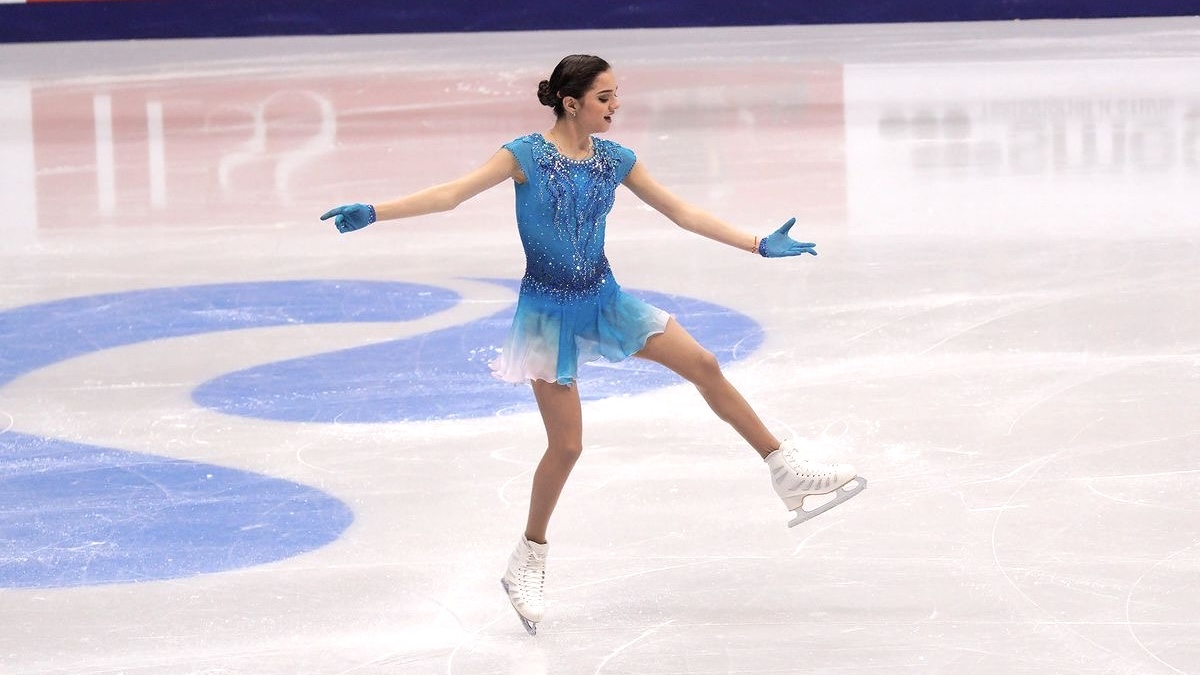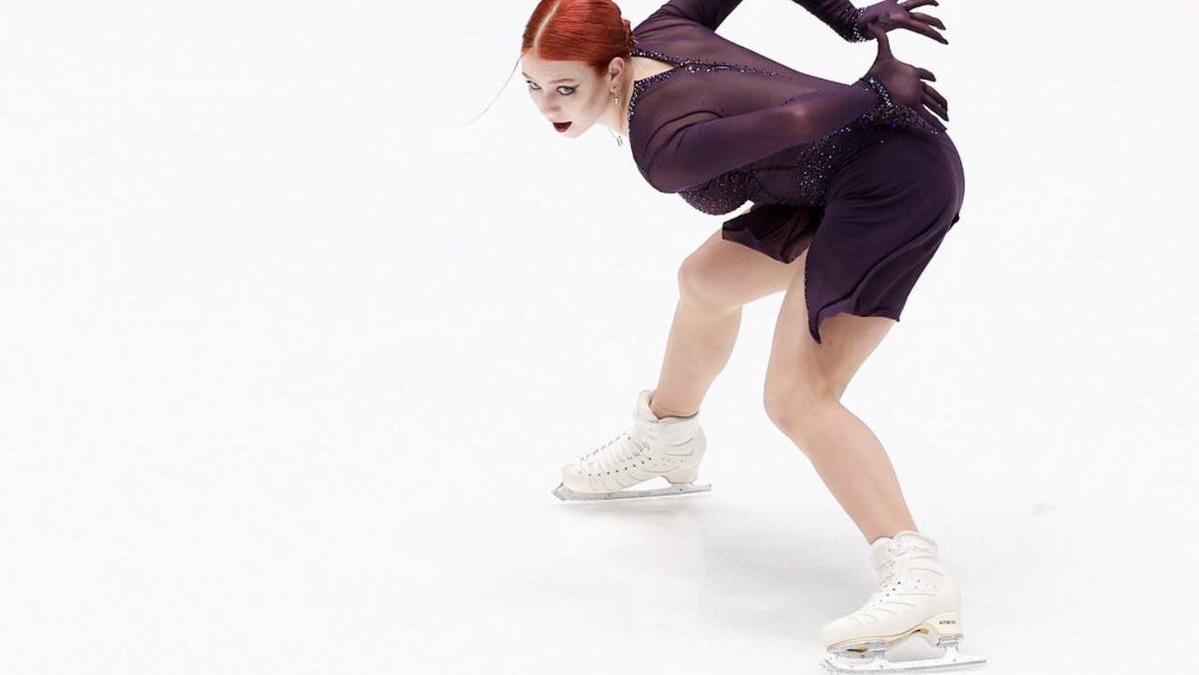January 15, 2025
Alexandra Trusova Expecting a Child
June 01, 2025

For figure skaters, the ice is where artistry and athleticism converge, but off-ice training is the backbone that makes those moments possible. From building strength for explosive jumps to enhancing flexibility for intricate spins, off-ice training complements on-ice practice, ensuring skaters perform at their peak while minimizing injury risks. Drawing from the experiences of Olympic and world champions like Yuzuru Hanyu, Nathan Chen, and Evgenia Medvedeva, this article explores why off-ice training is essential and how it can transform your skating journey.
On-ice training hones technical skills like spins, jumps, and footwork, but it’s limited by rink time and physical demands. Off-ice training addresses these gaps by targeting strength, endurance, flexibility, and mental focus. According to a 2021 study by the International Skating Union (ISU), skaters who incorporate structured off-ice programs reduce injury rates by up to 30% and improve jump consistency. Core strength, for instance, stabilizes landings, while cardiovascular endurance supports stamina during long programs.
Famous skaters exemplify this balance. Two-time Olympic champion Yuzuru Hanyu, known for his quadruple jumps and emotive performances, credits off-ice conditioning for his longevity. In a 2018 interview with Figure Skater Magazine, Hanyu described daily strength workouts, including plyometrics and core exercises, to maintain power for his quad loop and Salchow. His off-ice regimen also included ballet to refine posture and flow, showcasing how diverse training enhances artistry.
Strength training is critical for executing high-difficulty elements. Nathan Chen, the 2022 Olympic gold medalist, relied heavily on off-ice workouts to master his five-quad programs. Chen’s trainer, Rafael Arutyunyan, emphasized plyometric drills like box jumps and resistance band exercises to boost explosive power, as noted in a 2020 Skating magazine feature. These exercises mimic the force needed for quadruple jumps, allowing Chen to achieve unparalleled height and rotation speed.
Skaters can adopt similar routines. Bodyweight exercises like squats, lunges, and planks build leg and core strength, while plyometrics—such as tuck jumps—enhance explosiveness. For spins, exercises like single-leg balances and rotational core drills (e.g., Russian twists) improve stability and control. Chen’s ability to land a quad Lutz with ease stems from such targeted conditioning, proving its direct impact on-ice.
Flexibility is the cornerstone of spins, spirals, and expressive choreography. Evgenia Medvedeva, a two-time world champion, incorporated yoga and stretching into her off-ice routine to achieve her signature flexibility. In a 2019 ISU interview, Medvedeva explained how daily yoga sessions improved her Biellmann spin and spiral positions, reducing strain on her joints. Her mobility work also aided recovery, allowing her to train intensely without burnout.
Skaters should prioritize dynamic stretching before practice to warm up muscles and static stretching afterward to maintain range of motion. Pilates, favored by skaters like 2018 Olympic champion Alina Zagitova, strengthens deep core muscles while enhancing flexibility. These practices not only elevate performance but also prevent injuries like hip flexor strains, common in skating.
A four-minute free skate demands exceptional stamina. Hanyu’s ability to execute demanding elements late in his programs, like his 2017 world-record-setting Hope and Legacy, relied on off-ice cardio. He used interval training, such as sprinting and cycling, to mimic the anaerobic bursts of a program, as detailed in a 2017 Japan Times profile. This ensured he maintained precision even under fatigue.
Skaters can incorporate running, swimming, or jump rope into their routines, aiming for 20-30 minutes three times a week. High-intensity interval training (HIIT) is particularly effective, simulating the stop-start nature of skating. Such conditioning allows skaters to maintain energy for intricate footwork and dramatic finales.
Off-ice training also builds mental toughness, crucial for competition. Medvedeva used visualization techniques off-ice, mentally rehearsing her programs to boost confidence, as she shared in a 2020 Olympic Channel podcast. Similarly, Chen practiced mindfulness to manage pressure, a strategy that helped him deliver under scrutiny at the 2022 Beijing Games.
Skaters can adopt meditation or journaling to reduce anxiety and enhance focus. Off-ice time also allows for video analysis, helping skaters refine technique and artistry. These mental tools, honed away from the rink, translate to stronger performances under the spotlight.
Off-ice training is the unsung hero of figure skating success, empowering skaters to push technical and artistic boundaries. From Hanyu’s plyometrics to Chen’s power drills and Medvedeva’s yoga, the world’s best skaters demonstrate that off-ice work is as vital as rink time. By embracing strength, flexibility, endurance, and mental conditioning, skaters can elevate their performances, reduce injuries, and shine on the ice. As you lace up your skates, remember: your off-ice effort is what makes your on-ice magic possible.
Achieve More With VSA: Boost your skills with world-class coaches for just $29/hour. Perfect for skaters, hockey players, dancers, and athletes, VSA offers personalized training 24/7, 365 days a year, anywhere in the world.
By Vitalina Andrushchenko, Staff Writer

January 15, 2025
Alexandra Trusova Expecting a Child

April 05, 2025
Alexandra Trusova and Makar Ignatov Reveal the Gender of Their Future Child

December 26, 2024
2025 World Junior Championship Schedule